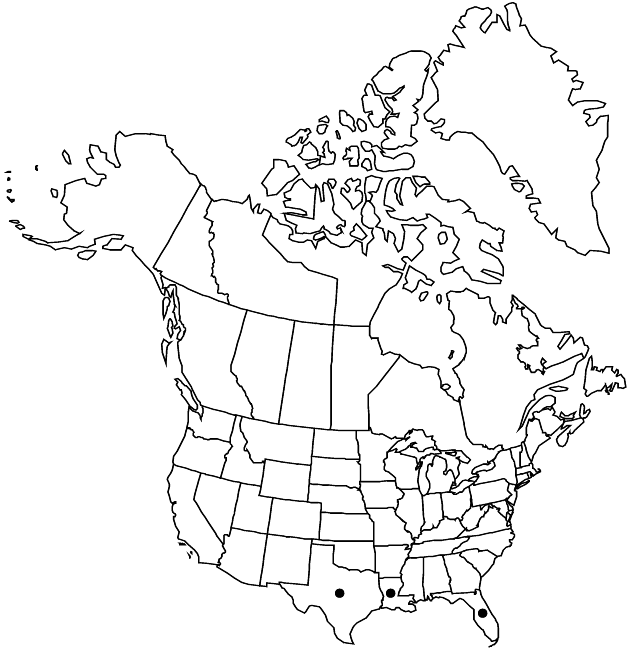Palafoxia texana
in A. P. de Candolle and A. L. P. P. de Candolle, Prodr. 5: 125. 1836.
Annuals or perennials (subshrubs), 20–80 cm. Stems ± scabrous, not stipitate-glandular. Leaf blades ovate-lanceolate to linear-lanceolate, 30–80 × (5–)10–20 mm. Involucres ± turbinate. Phyllaries 5–8 × 1–2.5 mm, ± equal, scabrellous, rarely stipitate-glandular. Ray florets 0. Disc florets 10–25; corollas actinomorphic, 7–10 mm, throats ± funnelform, shorter than lobes. Cypselae 4–6 mm; pappus scales of inner cypselae 2–6 mm. 2n = 22.
Phenology: Flowering spring–fall.
Habitat: Calcareous, usually rocky or gravelly soils
Elevation: 10–100+ m
Distribution

Fla., La., Tex., Mexico (Coahuila, Nuevo León, Tamaulipas).
Discussion
Plants of Palafoxia texana with non-stipitate-glandular phyllaries (versus stipitate-glandular) and pappus scales (on inner cypselae) 1–4 (versus 3–6) mm have been treated as var. ambigua. Some specimens are not readily assignable to either variety, and some are not readily assignable to either P. rosea or P. texana.
Selected References
None.